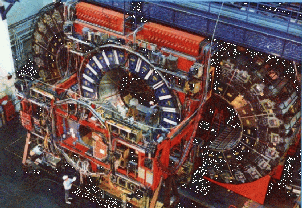

Rutgers is a collaborator in the construction and operation of CDF, the Collider Detector at Fermilab. This large multipurpose detector is designed to study the interactions of 2-TeV proton-antiproton collisions in the Tevatron. In 1995 CDF announced the discovery of the surprisingly massive top quark, and has measured its mass and decay properties. The experiment covers many other areas of physics as well, including studies of the W and Z vector bosons, which for example will yield improved tests of the "standard model" of elementary particles and narrow the search range for the predicted Higgs boson. CDF is also searching for new W and Z bosons, evidence of compositeness in quarks, gluons, super-symmetric particles, large extra dimensions and other new phenomena available in this new collision energy range. These studies use CDF's excellent detection efficiency for jets, photons, leptons, and missing neutral particles. The present run benefits from a threefold increase in luminosity, with upgraded data collection and processing capability, and a new silicon vertex track detector.
Rutgers faculty, postdoctoral participants, and students have helped upgrade major parts of the trigger and data acquisition system for the new runs, in particular extending the multiprocessor "computer farm," the third level of the trigger that selects the most interesting events. A new effort was also recently completed to improve the second level trigger for tau leptons, which due to their mass can be a result of processes involving the charged and/or neutral Higgs bosons. This trigger employs neural network chips to select calorimeter energy deposits that originate from tau decays to hadrons and electrons, while rejecting the large background from quark and gluon jets.
CDF will undergo a major upgrade in the coming few years, and will begin a major new set of running periods in mid 1999, called Run II. The Tevatron will be upgraded as well to provide a factor of ten more luminosity, which will in turn lead to the production of hundreds of top quark events and significantly extend the range of discovery of new phenomena.
Revised September 26, 1996